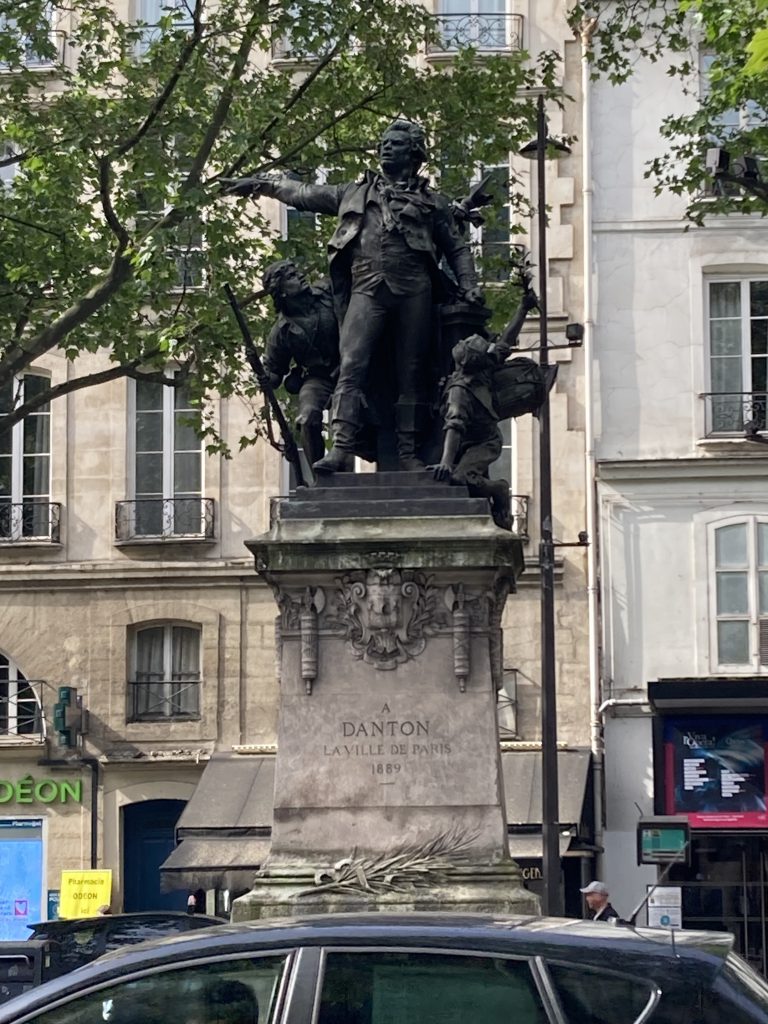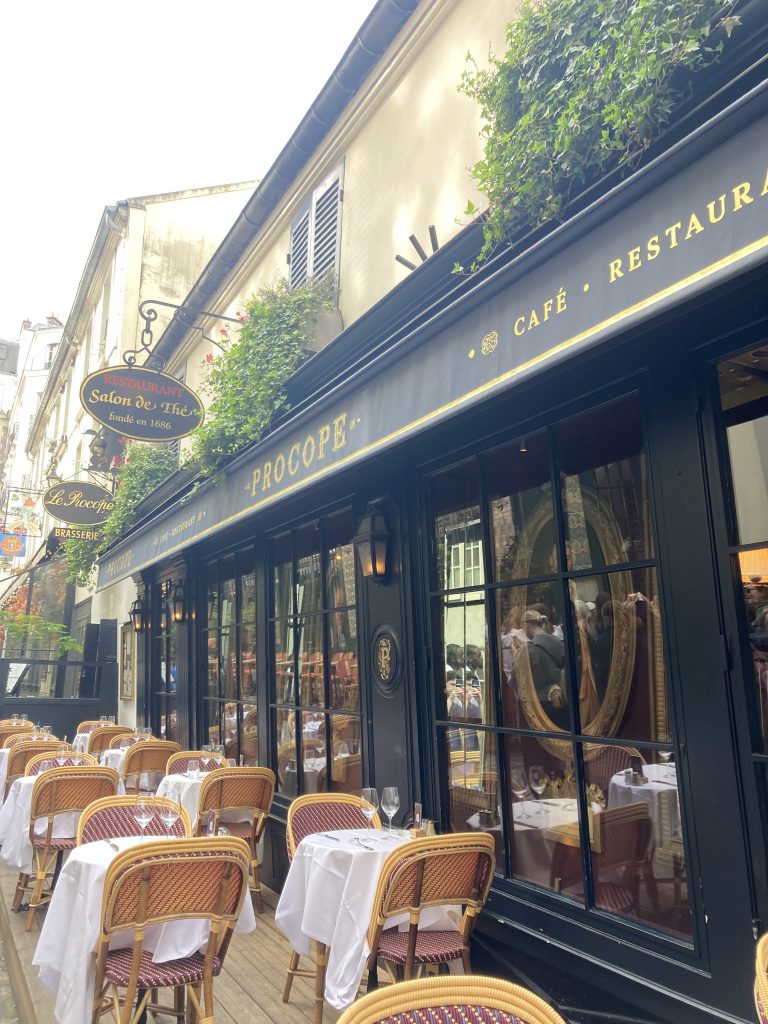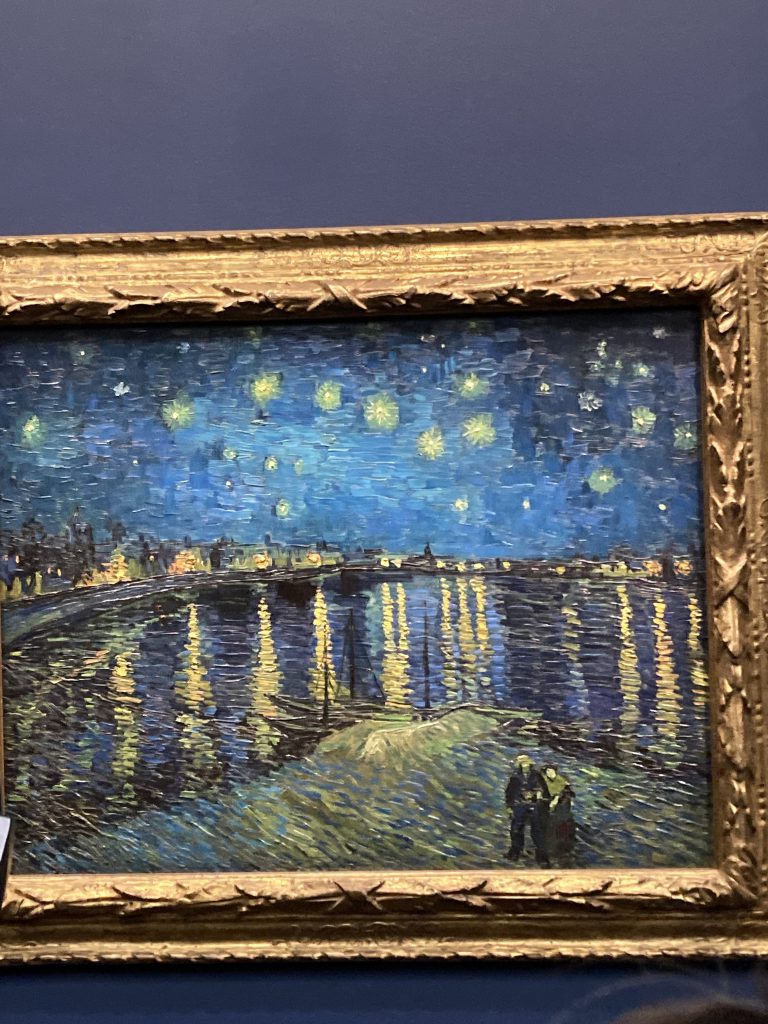After spending a few days in Paris with a little bit of rain, waking up to sunshine could only mean good things. The main focus of today was American Revolutionaries in Paris, and we were lucky enough to receive a guided walking tour throughout the streets of Paris from our lovely tour guide, Brad. We started the tour at Cour du Commerce Saint-Andre, which is the same street where Danton lived. Danton was a prominent figure in the French Revolution, as he was influential in the early days of the revolution and a leader in the revolutionary government. Unfortunately, he was eventually executed via the guillotine in April 1974. Interestingly enough, the first guillotine was also used on the same street we started on and Danton lived on.

The street we started on is also important for many other reasons. One of the first shopping malls was on this street, and this was very new because around 90% of citizens used to be poor, so they wouldn’t do much shopping. Also on this street was the printing press Marat ran during the 17 and 1800s, and the purpose of this shop was to aid citizens in becoming more literate and spread more revolutionary information, as a greater part of the population was able to read. Lastly, this street is home to the oldest cafe still in Paris. This cafe is notable for multiple reasons. First, the cafe contains Napoleon’s beak hat because, before he became rich, he pawned his hat in order to pay for food after being released from the military after Robespierre fell. Second, it has a front and back door. While having a front and back door may not seem special, it was important because if people came looking for someone, the cafe workers would help the person escape through the back. This fact is also a great example of why cafes were so important during the French Revolution. While each faction had their own cafe in order to confer with each other, everyone drank coffee because it gave much more assurance that it would be safe to drink than water did.


Afterwards, we learned about Benjamin Franklin’s achievements in France during the American Revolution. As most of you know, Franklin convinced France to help America against Britain. Franklin was able to convince Louis the XIV, one because he was charming, two because Louis’ father was a major general whose mission was to help France, and three because France had the Seven Year War with Britain. We also stumbled upon a bookstore, and Brad informed us of a French law where new books can’t be discounted more than 5% in order to keep local bookstores afloat. Later, we reached the Senate Building and Luxembourg Gardens. The Senate Building was one of the last buildings the Germans held, and there was a lot of fighting around the Luxembourg Gardens.

To end the tour, we went to the Pantheon. The Pantheon is named after the Rome Pantheon and is the location where French heroes are buried. Some people include Voltaire, Marceau, Simone Veil, Rousseau, and Josephine Baker. Baker is also the first American and one of 6 women buried in the Pantheon.

After the tour concluded, we had time to kill and bellies to feed, so a big group of us stopped at a cafe near the pantheon for brunch/lunch. I got a classic, delicious French omelette, which came with a side salad along with a fresh hot chocolate. Other orders consisted of chicken and mashed potatoes, avocado toast, and some pasta. The cafe encompasses a lot of what I’ve pictured about Paris: sitting outside on a nice, warm, sunny day along the side of cobblestone roads, sipping coffee, and eating some food.

To finish up the day, we took a guided tour of the Musée d’Orsay. D’Orsay used to be a railway station in the early 1900s because a lot of people were coming to Paris, and eventually, in 1986, the museum opened. D’Orsay contains many paintings from a multitude of French artists, like Manet, Bonhuer, the most famous woman painter of the 19th century, and Renoir. Additionally, our tour focused on the change from conventional art based on 3D to more modern impressionist paintings, which focus on the fleeting moment. At the end of the museum tour, we learned about Van Gogh, who painted for only 10 years: 6 years in the darker Dutch style, and then 4 years in a brighter style after moving to Paris.

